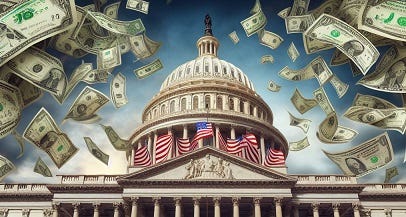U.S. Investment Policies and Their Role in Business Development

January 30, 2025
U.S. investment policies play a pivotal role in shaping business growth by influencing capital allocation, market dynamics, and industry development. These policies create an environment that either fosters or hinders business expansion, profitability, and innovation. For investors, entrepreneurs, and corporate leaders, understanding these policies is crucial for making strategic decisions that align with long-term goals. This article explores how U.S. investment policies shape business growth, providing insight into the regulations, incentives, and challenges that businesses face.
1. The Link Between U.S. Investment Policies and Business GrowthAt the heart of every successful business lies the availability of capital—whether for expansion, innovation, or day-to-day operations. U.S. investment policies, ranging from tax reforms to financial regulations, directly impact the flow of capital into businesses. By adjusting these policies, the government can encourage or discourage investment in various sectors, affecting the trajectory of industries and the broader economy.
Tax Incentives for BusinessesTax policies are one of the most effective tools used by the U.S. government to drive business growth.
The U.S. government encourages business innovation through targeted policies designed to support R&D investments.
U.S. regulatory policies can either facilitate or obstruct business growth, depending on how they are structured and enforced. These regulations encompass everything from labor laws to environmental protections and financial market oversight.
Labor Laws and Workforce DevelopmentThe availability of a skilled workforce is essential for business growth. U.S. investment policies that focus on workforce development help businesses scale.
As sustainability becomes a priority, U.S. environmental policies increasingly shape business strategies.
U.S. financial regulations, including banking laws and securities regulations, ensure that businesses have access to capital markets while maintaining stability and investor confidence. These regulations can either encourage or limit the ability of businesses to raise funds.
Banking and Lending RegulationsAccess to capital through loans or equity financing is critical for business growth. U.S. financial regulations that ease access to credit can stimulate business expansion.
Securities regulations impact a company’s ability to raise capital through the public markets.
The global economy has become increasingly interconnected, and U.S. trade policies have a significant impact on businesses that depend on international markets.
To thrive in a dynamic regulatory environment, businesses must stay agile and adapt to policy changes.

U.S. Investment Policies: Key Trends and Effects on Markets
Explore how U.S. investment policies shape financial markets, economic growth, and business strategies, offering both opportunities and challenges for investors

U.S. Investment Policies and Their Role in Business Development
Explore how U.S. investment policies influence business growth, offering opportunities and challenges for industries. Understand the key regulations and strategies driving economic expansion

U.S. Investment Policy Reforms: Shaping the Future of Business
Explore the key investment policy reforms in the U.S. economy that are reshaping business strategies, influencing markets, and creating new opportunities for investors

A Comprehensive Look at U.S. Investment Policy Shifts in 2025
In 2025, U.S. investment policies have undergone significant transformations. Discover how these reforms are impacting industries, investment strategies, and economic growth

Analyzing the Impact of U.S. Investment Policies on Investment Strategies
Explore how evolving U.S. investment policies create new opportunities and risks for investors. Learn how changes in tax, trade, and financial regulations affect investment strategies

A Look Ahead: U.S. Investment Policies and Financial Market Trends
As the U.S. economy evolves, so do its investment policies and financial markets. Discover what the future holds for investors as we explore trends, innovations, and challenges in U.S. investment strategies

A Guide to Understanding U.S. Investment Policies for Business Growth
Explore how U.S. investment policies impact business success. Learn how to navigate key regulations, tax incentives, and funding opportunities to maximize growth potential

How U.S. Government Policies Influence Investment Approaches
The U.S. government plays a key role in shaping investment strategies through regulatory frameworks, fiscal policies, and incentives. Explore how these factors impact business decisions and investment trends

U.S. Investment Policies and Global Impact
U.S. investment policies are reshaping global markets, influencing trade, foreign investments, and economic stability. This article explores the implications for international businesses and investors
The Atlantic Daily
Get our guide to the day’s biggest news and ideas, delivered to your inbox every weekday and Sunday mornings. See more newsletters
.webp)
Ideas That Matter
Subscribe and support more than 160 years of independent journalism.
Subscribe